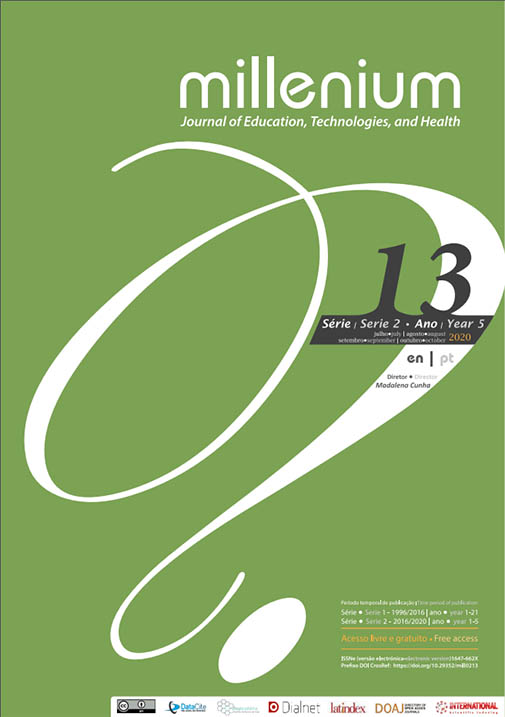Efectos de los residuos de extracción de "sargazo" en la germinación de semillas
DOI:
https://doi.org/10.29352/mill0213.03.00279Palabras clave:
algaS, residuos extractivos, Germinación de semillas, Phaseolus vulgaris, Brassica oleracea var. acephalaResumen
Introducción: El sargazo es una mezcla de varias especies de macroalgas que crecen en las rocas de la costa de Minho y que sintetizan diferentes metabolitos durante su desarrollo. Durante el proceso de extracción de macroalgas, algunos de estos metabolitos no se utilizan, lo que no promueve la economía circular.
Objetivos: Este trabajo tuvo como objetivo evaluar el potencial de germinación de semillas de los residuos descartados del proceso de extracción acuosa de “Sargazo”. Proporcionar un uso potencial al subproducto infravalorado de la extracción.
Métodos: Fue utilizado frijol cv. semillas de torino (Phaseolus vulgaris) y col rizada (Brassica oleracea var. acephala) en ensayos con los siguientes tratamientos de residuos “Sargazo” cosechados en 2017 y 2018, con y sin el proceso de lavado (CL y SL). Durante la prueba, verificamos la tasa de emergencia, la tasa de germinación y la diferencia de peso total. Al final se midió la longitud de la raíz y el brote y lo mismo para el peso fresco.
Resultados: En frijol, el tratamiento con “Sargazo” lavado 2018 fue el único que presentó germinación (C = 60%; CL2018 = 32%) además del control, y obtuvo resultados superiores en el peso radicular (C = 0,0350 g; CL2018 = 0,299 g). En col rizada, solo el sargazo 2017 lavado tuvo una tasa de germinación similar al control (C = 80%, CL2017 = 64%) y el peso total fue mejor (C = 0,0026 g, CL2017 = 0,0102 g).
Conclusiones: Está claro que los residuos tienen potencial para la germinación de las semillas, pero solo si se realiza el proceso de lavado.
Descargas
Citas
Bayuelo-Jiménez, J. S., Craig, R., & Lynch, J. P. (2002). Salinity tolerance of Phaseolus species during germination and early seedling growth. Crop Science, 42(5), 1584-1594.
Battacharyya, D., Babgohari, M. Z., Rathor, P., & Prithiviraj, B. (2015). Seaweed extracts as biostimulants in horticulture. Scientia Horticulturae, 196, 39–48. https://doi.org/10.1016/J.SCIENTA.2015.09.012
Chatzissavvidis, C., & Therios, I. (2014). Role of algae in agriculture. Seaweeds: Agricultural Uses, Biological and Antioxidant Agents.Retrieved from http://www.scopus.com/inward/record.url?eid=2-s2.0-4956765421&partnerID=tZOtx3y1
Economou, G., Lyra, D., Sotirakoglou, K., Fasseas, K., & Taradilis, P. (2007). Stimulating Orobanche ramosa seed germination with an Ascophyllum nodosum extract. Phytoparasitica, 35(4), 367–375. https://doi.org/10.1007/BF02980699
Ghisellini, P., Cialani, C., & Ulgiati, S. (2016). A review on circular economy: the expected transition to a balanced interplay of environmental and economic systems. Journal of Cleaner Production, 114, 11–32. https://doi.org/10.1016/J.JCLEPRO.2015.09.007
Khan, W., Rayirath, U. P., Subramanian, S., Jithesh, M. N., Rayorath, P., Hodges, D. M., … Prithiviraj, B. (2009). Seaweed Extracts as Biostimulants of Plant Growth and Development. Journal of Plant Growth Regulation, 28(4), 386–399. https://doi.org/10.1007/s00344-009-9103-x
Lopes, J. (2018). Estudo da influência do uso de extratos de macroalgas na produção de alface (Lactuca sativa). Relatório de estágio profissionalizante, Escola Superior Agrária de Coimbra, Instituto Politécnico de Coimbra, Coimbra, Portugal. In Portuguese Monagail, M., Cornish, L., Morrison, L., Araújo, R., & Critchley, A. T. (2017). Sustainable harvesting of wild seaweed resources. European Journal of Phycology, 52(4), 371–390. Https://doi.org/10.1080/09670262.2017.1365273
Pereira, L., & Correia, F. (2015). Macroalgas Marinhas da Costa Portuguesa-Biodiversidade, Ecologia e Utilizações (1st Edition). Paris: Nota de Rodapé Edições. ISBN 978-989-20-5754-5
Pereira, L., & Cotas, J. (2019). Historical Use of Seaweed as an Agricultural Fertilizer in the European Atlantic Area. In L. Pereira, K. Bahcevandziev, & N. H. Joshi (Eds.), Seaweeds as Plant Fertilizer, Agricultural Biostimulants and Animal Fodder (1st Edition, pp. 1–22). Boca Raton, FL: CRC Press. https://doi.org/10.1201/9780429487156
Rayorath, P., Jithesh, M. N., Farid, A., Khan, W., Palanisamy, R., Hankins, S. D., … Prithiviraj, B. (2008). Rapid bioassays to evaluate the plant growth promoting activity of Ascophyllum nodosum (L.) Le Jol. using a model plant, Arabidopsis thaliana (L.) Heynh. Journal of Applied Phycology, 20(4), 423–429. Https://doi.org/10.1007/s10811-007-9280-6
Santelices, B. (2007). The discovery of kelp forests in deep-water habitats of tropical regions. Proceedings of the National Academy of Sciences, 104(49), 19163-19164. https://doi.org/10.1073/pnas.0708963104
Silva, L. D., Bahcevandziev, K., & Pereira, L. (2019). Production of bio-fertilizer from Ascophyllum nodosum and Sargassum muticum (Phaeophyceae). Journal of Oceanology and Limnology, 37(3), 918–927. Https://doi.org/10.1007/s00343-019-8109-x
Stahel, W. R. (2016). The circular economy. Nature News, 531(7595), 435-438. https://doi.org/10.1038/531435a
Descargas
Publicado
Cómo citar
Número
Sección
Licencia
Derechos de autor 2020 Millenium - Journal of Education, Technologies, and Health

Esta obra está bajo una licencia internacional Creative Commons Atribución 4.0.
Los autores que sometan propuestas para esta revista estarán de acuerdo con los siguientes términos:
a) Los artículos serán publicados según la licencia Licença Creative Commons (CC BY 4.0), conforme el régimen open-access, sin cualquier coste para el autor o para el lector.
b) Los autores conservan los derechos de autor y conceden a la revista el derecho de la primera publicación, se permite la divulgación libre del trabajo, desde que sea correctamente atribuida la autoría y la publicación inicial en esta revista.
c) Los autores están autorización para firmar contratos adicionales separadamente, para la distribución no exclusiva de la versión del trabajo publicada en esta revista (ej.: publicar en un repositorio institucional o como capítulo de un libro), con reconocimiento de la autoría y publicación inicial e esta revista.
d) Los autores tienen permiso y son alentados a publicar y distribuir su trabajo on-line (ej.: en repositorios instituciones o en su página personal) ya que eso podrá generar alteraciones productivas, así como aumentar el impacto y la citación del trabajo publicado.
Documentos necesarios para la sumisión
Plantilla del artículo (formato editable)





